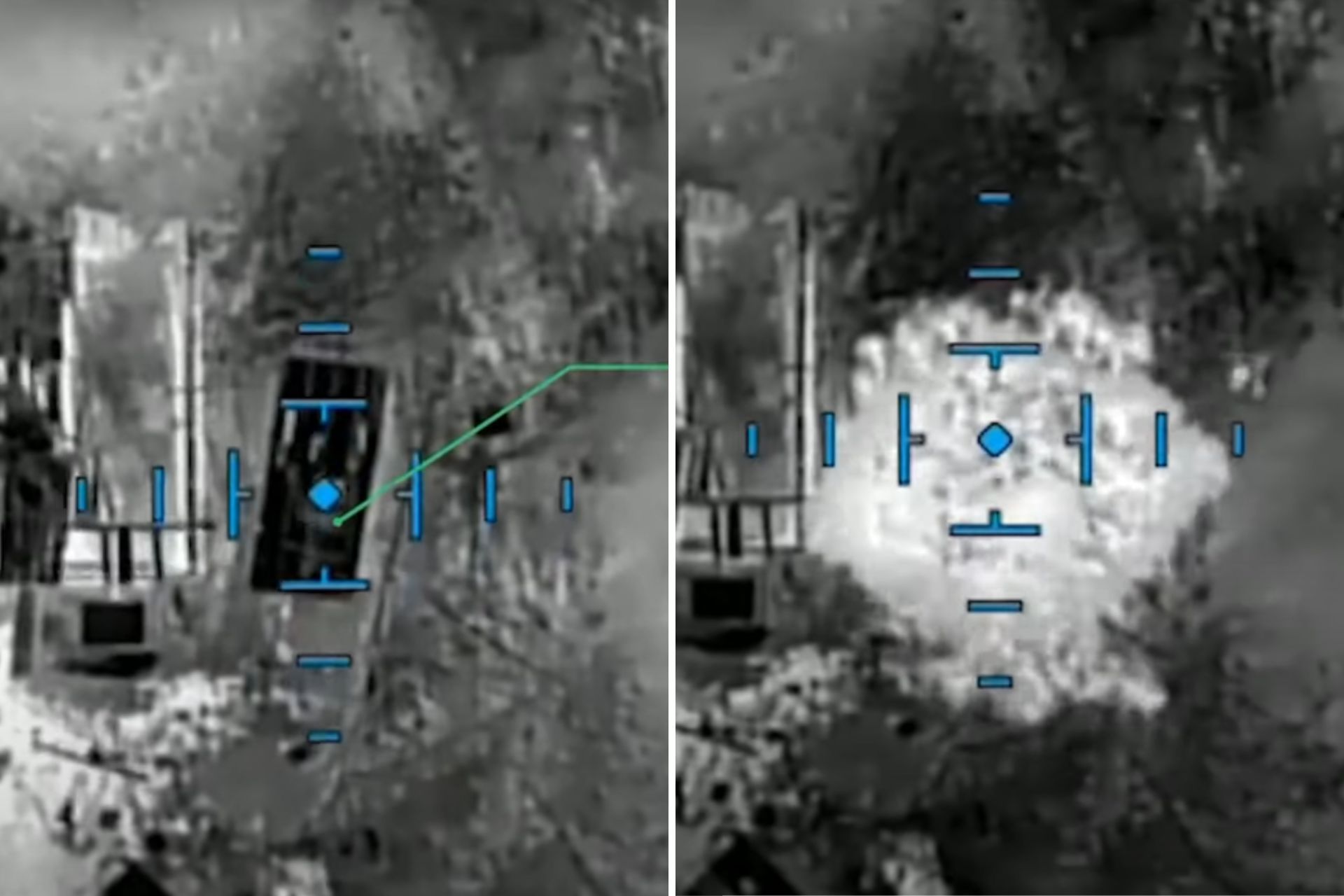Breaking News
NEMESIS Drones Unleash Precision Strikes on Russian Artillery and Air Defense Systems During Nighttime Operations.
On August 20, 2024, the Ukrainian Armed Forces released a video showcasing the use of NEMESIS drones in targeting Russian artillery and air defense systems. The 412th Unmanned Systems Battalion deployed these attack drones primarily during night operations, targeting Russian artillery systems, armored vehicles, and air defense systems. Equipped with multiple explosives and stable communication via an integrated Starlink terminal, these drones played a pivotal role in the strikes. The footage highlighted 17 destroyed targets, though the extent of damage to some remains unclear.
Follow Army Recognition on Google News at this link

Ukrainian heavy drone Nemesis “Baba Yaga” in Russian slang in 2023 (Picture source: Telegram Channel VOIN_DV)
FPV drones, often referred to as kamikaze drones, are small, remotely piloted aircraft equipped with cameras for real-time control. Since the onset of the Russian invasion, Ukraine's production of these drones has surged to approximately 50,000 units per month. However, this production level remains insufficient to meet the Ukrainian military's estimated need of around 200,000 FPV drones monthly. These drones are primarily used for precision strikes against tanks, armored vehicles, and enemy positions.
Among the targets hit by NEMESIS drones were two Osa surface-to-air missile systems designed to shoot down drones. Additionally, a vehicle from the Russian Borisoglebsk-2 electronic warfare system was struck.
This system's primary function is to detect and jam various communication channels, including tactical and satellite communication systems. The drones also successfully targeted Russian BM-21 Grad rocket launchers and completely destroyed a 2S4 Tulip self-propelled heavy mortar, causing a powerful detonation that destroyed the vehicle.
The conflict in Ukraine has highlighted significant challenges for both Russian and Ukrainian forces in protecting critical military assets such as radar systems, missile launchers, artillery, and armored vehicles. These assets are vital for maintaining battlefield superiority, but their protection has become increasingly difficult due to advanced targeting technologies and countermeasures.

Screenshot from the video showing the destruction of an Osa surface-to-air missile system. (Picture source: Ukrainian Forces)
For Russian forces, one of the main challenges is defending against Ukrainian strikes using Western-supplied precision munitions and intelligence. Ukraine's access to advanced radars and anti-radar missiles, such as the AGM-88 HARM, has made it challenging to safeguard Russian radar systems and air defense batteries once their locations are identified. Similarly, Ukrainian forces struggle to protect their mobile artillery and air defense systems from Russian strikes.
Russian counter-artillery radars, like the Zoopark-1M, can detect and locate Ukrainian artillery positions after they fire, making them vulnerable to retaliatory strikes. Both sides also face difficulties in protecting their armored vehicles and tanks from increasingly accurate and destructive drone and missile attacks.
In both cases, the constant threat of detection and subsequent strikes complicates the maintenance of operational effectiveness, making mobility, camouflage, and rapid deployment crucial for survival on the battlefield.


























